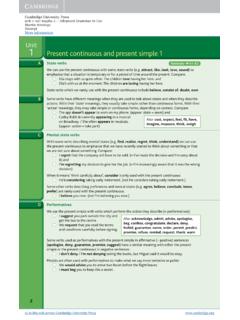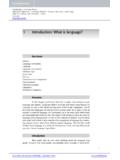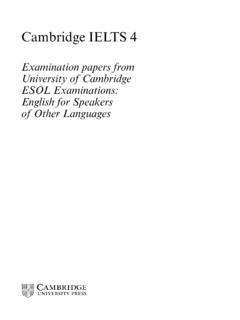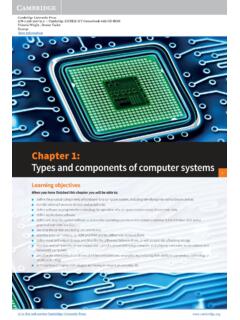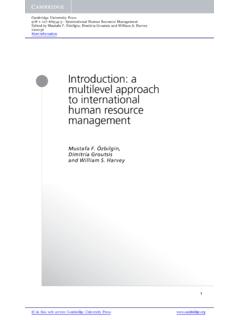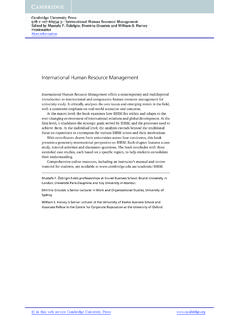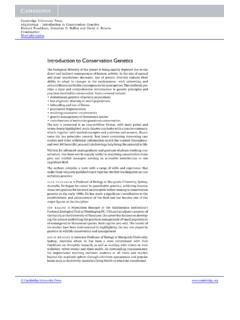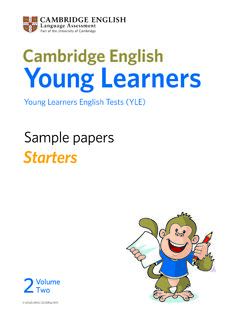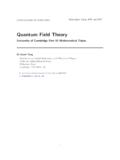Transcription of Power, 1924 29 Stalin s Rise to - Cambridge University Press
1 Cambridge University Press978-1-316-50369-0 History for the IB Diploma Paper 3 The Soviet Union and Post-Soviet Russia (1924 2000)Allan Todd ExcerptMore in this web service Cambridge University PressStalin s Rise to Power, 1924 292 Cambridge University Press978-1-316-50369-0 History for the IB Diploma Paper 3 The Soviet Union and Post-Soviet Russia (1924 2000)Allan Todd ExcerptMore in this web service Cambridge University PressIntroductionAny study of the consolidation of the Soviet state from 1924 onwards involves a study of the policies and methods Stalin used to ensure its survival, development and expansion during his long leadership.
2 Before examining these, however, it is necessary to understand how he rose to power, as many of the issues involved in the power struggle which broke out after 1924 formed the background to his later policies. This chapter, after providing some background on events 1917 24, will examine Stalin s rise, and the reasons why he was able to become the dominant leader of the Soviet Union a position he held from 1928 until his death in 1953. TIMELINE1917 Oct/Nov: Bolshevik Revolution1921 Mar: Kronstadt Rebellion; NEP adopted, factions and opposition parties banned1922 Apr: Stalin becomes General-Secretary of the Communist Party Dec: Lenin writes his last Testament; Triumvirate formed against Trotsky1923 Jan: Lenin s Postscript recommends Stalin s dismissal1924 Jan: Lenin dies.
3 13th Party Conference condemns Trotsky s views May: Central Committee keeps Lenin s Testament secret and decides not to dismiss Stalin1925 Apr: Party debate over permanent revolution versus socialism in one country May: Start of the Leningrad Opposition Dec: 14th Party Congress; the Leningrad Opposition is outvoted1926 Jul: United Opposition formed; Zinoviev dismissed from the Politburo1927 Oct: Stalin persuades the Central Committee to expel Trotsky and Zinoviev from the Central Committee Nov: Trotsky and Zinoviev expelled from the Communist Party, and Kamenev from the Central Committee Dec: 15th Party Congress: Zinoviev and Kamenev end the United Opposition1928 Jul.
4 Stalin and Bukharin clash over collectivisation222 The Soviet Union and Post-Soviet Russia (1924 2000) Cambridge University Press978-1-316-50369-0 History for the IB Diploma Paper 3 The Soviet Union and Post-Soviet Russia (1924 2000)Allan Todd ExcerptMore in this web service Cambridge University Press Aug: Bukharin tries to form an alliance with Trotsky1929 Apr: Bukharin removed as editor of Pravda Nov: Bukharin removed from PolitburoNote: The Russian calendar in use until 1918 was 13 days behind the calendar used in the rest of Europe. The revolutions of 1917 took place in February and October according to the old Russian calendar, but in March and November according to the Western calendar.
5 This book therefore refers to the February/March Revolution and the October/November QUESTIONS What was Stalin s position before 1924? How did Stalin win the struggle for power after 1924? Why was Stalin able to defeat his rivals?Overview In November 1917, Lenin s Bolsheviks took power in a revolution which had the backing of large numbers of industrial workers and soldiers. After the revolution, the Bolsheviks (renamed the Russian Communist Party in 1918) formed a new revolutionary government. However, they faced violent opposition, and a civil war broke out which lasted until 1921. During this period, the constant turmoil led to serious political crises and economic collapse.
6 These problems sparked growing disagreements among the Russian Communist Party (RCP) leaders about what policies to adopt after 1921. From 1922, Lenin had suf ered a series of progressively serious strokes, which increasingly prevented him from taking an active part in politics. In December 1922, he wrote a Testament, outlining the strengths and weaknesses of the main leaders; in January 1923, worried by some of Stalin s actions, he added a Postscript, recommending Stalin be dismissed. Stalin s Rise to Power, 1924 29 23 Cambridge University Press978-1-316-50369-0 History for the IB Diploma Paper 3 The Soviet Union and Post-Soviet Russia (1924 2000)Allan Todd ExcerptMore in this web service Cambridge University Press Trotsky s main rivals, Zinoviev and Kamenev, made an alliance with Stalin , in order to prevent Trotsky replacing Lenin.
7 Using his position as general-secretary, Stalin was able to control meetings and elections to conferences and congresses. Trotsky was soon isolated. With Trotsky defeated, Stalin then turned on Zinoviev and Kamenev, supported by Bukharin and the Right. Later, in 1928, having defeated the Left, Stalin turned on Bukharin and by 1929 had also defeated the Right of the Party. Figure : Lenin (circled left) and Trotsky (circled right) with Red Army troops after the suppression of the Kronstadt Rebellion in What was Stalin s position before 1924?In early 1924, Josef Stalin seemed most unlikely to rise to the top.
8 Yet, by 1929, he had politically defeated and neutralised all his main rivals all of whom had seemed much more likely candidates for the leadership after Lenin s The Soviet Union and Post-Soviet Russia (1924 2000) Cambridge University Press978-1-316-50369-0 History for the IB Diploma Paper 3 The Soviet Union and Post-Soviet Russia (1924 2000)Allan Todd ExcerptMore in this web service Cambridge University PressJosef Stalin (1880 1953): His real name was Josef Djugashvili; he joined the Russian Social Democratic Labour Party and sided with Lenin in the 1903 split. Unlike most of the other communist leaders, he was not an intellectual, and mainly undertook practical tasks (including bank robberies and editing newspapers).
9 In 1922, he took on the role of General-Secretary of the Communist Party a routine administrative job which the other leaders did not want. He rarely disagreed with Lenin and, after the latter s death in 1924, began to use his position to make himself supreme ruler. He executed many of his rivals in the purges of the 1930s, and remained head of the USSR until his death in s Last Struggle , 1921 24 During the i nal stages of the First World War, in February/March 1917, a revolution in Russia had overthrown the Tsar (emperor), and an unelected provisional government had declared Russia to be a democratic republic.
10 However, the Provisional Government failed to carry out land reform, kept Russia in the war, and delayed holding promised elections. Consequently, it became increasingly unpopular. In October/November, a second revolution had taken place, at the insistence of Lenin. This Bolshevik Revolution made Russia the world s i rst workers state. This new state renamed the Russian Socialist Federal Soviet Republic (RSFSR) was then plunged into three years of civil the Bolsheviks i nally won power in 1921, the massive economic and political problems all this turmoil and warfare had created led to many sharp policy dif erences between the leading Bolsheviks.
